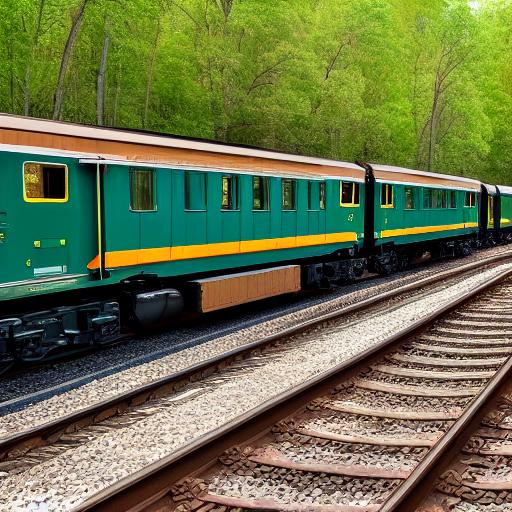
Railways have long served as a crucial mode of transportation, ensuring the seamless movement of people and goods across vast distances. In recent years, the railway industry has witnessed a technological transformation, with artificial intelligence (AI) revolutionizing operations and safety. One of the most exciting advancements in this field is the application of computer vision models, such as YOLOv7, which enables railway organizations to harness the power of AI for enhanced efficiency and security. In this article, we will explore how Navan AI, a pioneering no-code computer vision platform, is empowering businesses to build and deploy computer vision models effortlessly, revolutionizing the railway industry.
Navan AI is a game-changing platform that eliminates the need for complex coding and programming skills, allowing businesses to build and deploy computer vision models within minutes rather than hours or days. By leveraging the power of AI and computer vision, Navan AI enables railway organizations to streamline their operations, enhance safety measures, and optimize resource allocation. With the YOLOv7 model, which stands for "You Only Look Once," railway industry players can achieve remarkable accuracy and real-time object detection capabilities, transforming traditional railway operations.
The YOLOv7 model offers several distinct advantages in the railway industry. Firstly, it enables automated visual inspections, minimizing the need for manual checks and reducing operational costs. Through Navan AI's intuitive interface, railway organizations can train the model to detect anomalies, such as damaged tracks, faulty signaling systems, or potential security threats. This proactive approach to maintenance allows for early detection of issues, reducing downtime and enhancing overall safety.
Moreover, YOLOv7 can play a vital role in optimizing rail operations. By analyzing live video feeds from surveillance cameras placed along railway tracks and platforms, the model can detect overcrowding, identify vacant seats in trains, and monitor passenger movements. This valuable data empowers railway operators to make informed decisions, ensuring smooth operations, and improving the overall passenger experience. Additionally, the model can detect and track trains, helping operators manage traffic flow, prevent collisions, and reduce delays.
Several leading railway organizations have already embraced AI technologies and computer vision models to improve their operations. For example, a major railway corporation has implemented AI-based video analytics. By leveraging computer vision models like YOLOv7, they can detect unauthorized access to restricted areas, identify potential safety hazards, and mitigate risks in real-time. These capabilities have not only enhanced security but also significantly reduced response times to critical incidents.
Another noteworthy application of computer vision in the railway industry is predictive maintenance. By leveraging AI algorithms, railway organizations can predict the maintenance needs of various assets, such as locomotives, switches, and signaling systems. This predictive approach minimizes the chances of unexpected breakdowns, maximizes asset lifespan, and optimizes maintenance schedules, leading to substantial cost savings.
Additionally, AI-powered computer vision systems have been employed for ticketing and fare evasion detection. Through the analysis of video footage, YOLOv7 can accurately identify fare evaders, allowing railway organizations to take appropriate actions and ensure fare compliance. This helps to maintain revenue integrity and improve overall profitability.
In the field of safety and security, computer vision models like YOLOv7 have been instrumental in detecting potential threats or suspicious activities in real-time. By analyzing video feeds from surveillance cameras, the system can alert authorities to situations that may require immediate attention, such as unauthorized access to restricted areas, suspicious packages, or abandoned objects. This proactive approach enhances passenger safety and security throughout the railway network.
The integration of AI and computer vision technologies in the railway industry has also paved the way for advancements in maintenance scheduling and asset management. By leveraging data from computer vision systems, railway organizations can gain insights into the health and performance of their infrastructure and rolling stock. This enables proactive maintenance planning, optimizing asset utilization, and minimizing disruptions to services.
In conclusion, the railway industry is undergoing a transformative shift with the integration of AI technologies and computer vision models. Navan AI, with its no-code approach and the powerful YOLOv7 model, is spearheading this revolution, enabling railway organizations to build and deploy computer vision models effortlessly. Through automated visual inspections, optimized rail operations, enhanced security measures, predictive maintenance, fare evasion detection, and safety enhancements, AI is reshaping the future of rail transportation. By embracing AI-powered solutions like Navan AI, railway organizations can unlock immense potential, delivering safer, more efficient, and customer-centric services.
With Navan AI, the railway industry is embracing a future where AI and computer vision go hand in hand, making rail transportation smarter, more reliable, and sustainable than ever before.